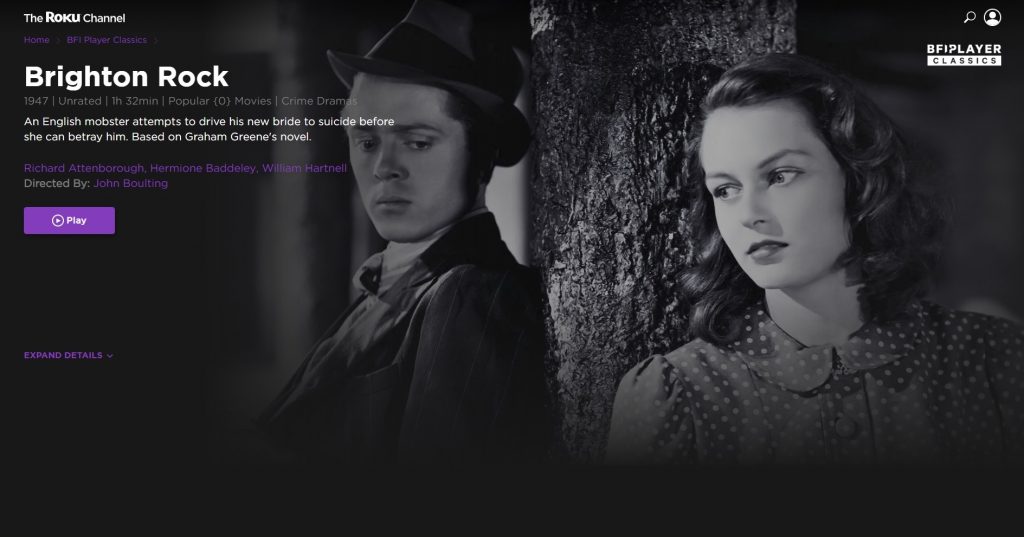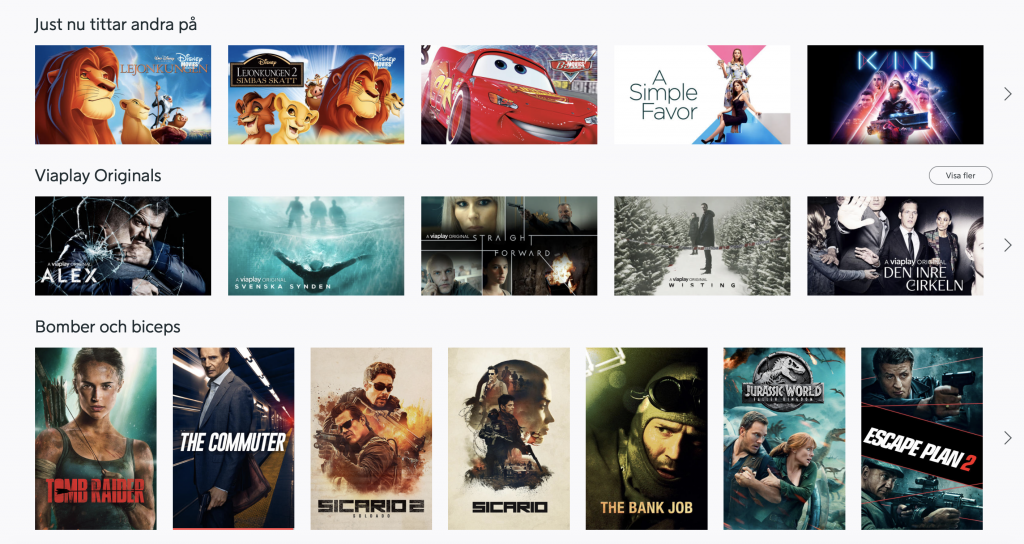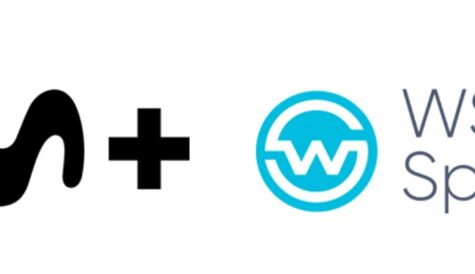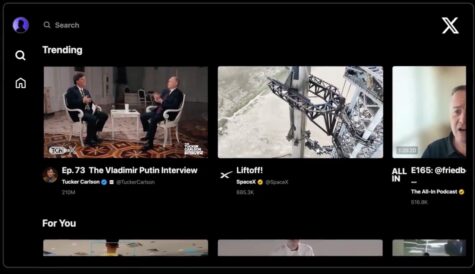Confluence of streams

Subscription video-on-demand services are proliferating, but questions are arising about the affordability and convenience of stacking multiple offerings. Stuart Thomson reports.
Subscription video-on-demand has transformed the video distribution landscape, with global players such as Netflix and Amazon effectively disrupting traditional pay TV with a low-cost subscription model.
Disney+, Apple TV+ and WarnerMedia’s HBO Max will soon join an already crowded market, while other content companies such as Viacom and NBCUniversal adopt advertising or hybrid strategies, supplemented by SVOD services targeted at specific niche audiences.
The SVOD field of play is also occupied by slightly less high-profile services such as Lionsgate-owned Starzplay – now building a strong international base – or MGM’s Epix. At the same time, local broadcasters such as the BBC and ITV with Britbox, ProSiebenSat.1 (and Discovery) with Joyn, and France Televisions, TF1 and M6 with Salto are making late moves to find a place.
In such an increasingly crowded landscape, questions have been raised about how much growth remains possible in SVOD. Netflix’s latest quarterly figures alarmed market-watchers, as the clear leader in the field signed up half as many new subscribers as expected, leading to a sharp drop in its share price.
If Netflix is stumbling, what hope is there for smaller premium streaming outfits? That depends on where you look. While French pay TV operator Canal+ saw subscriptions to its Canalplay SVOD offering collapse thanks to competition from Netflix and restrictive local windowing rules, there are plenty of examples of other streaming offerings – whether regional, international or highly niche.
The regional player
“The fortunes of local players have varied hugely between markets. While Canal+’s Canalplay service in France clearly lost its battle with Netflix – something that the service’s owner blamed on local regulatory shackles – Nordic Entertainment Group’s Viaplay in the Nordic market appears to have gone from strength to strength, adding 65,000 customers in the normally quiet second quarter of this year.
“Viaplay is doing very well and we are signing up new subscribers all the time,” says Alexander Bastin, SVP and Viaplay chief commercial officer at Nordic Entertainment Group
Bastin says that he believes there is still room for growth, even in the highly penetrated Nordic market, where streaming services are taken by around half of the region’s 12 million or so households. The market itself is particularly conducive to take-up of streaming services because of the high-level of broadband penetration and the high quality of connectivity. The market is traditionally home to a large proportion of early adopters of new technology and adoption of streaming offerings is helped by widespread proficiency in English among the general population.
“Streaming is not a niche service. It is becoming mainstream,” says Bastin, adding that he expects a significant proportion of the remaining 50% of non-streaming homes to sign up for a service. He also expects further growth through service stacking. Currently streaming households take an average of around 1.4 services per household in this market.
“We don’t see this as a winner-takes-all market. Rights tend to be exclusive to platforms and there are reasons for people to sign up to multiple services, unlike with music,” says Bastin. “At some point streaming will be the norm and vast majority of people will be taking something. There are not many households that would not venture into streaming at all. It is then up to us to maintain our edge through differentiation to capitalise on that growth. We are quite well positioned. Viaplay costs about €10 or €11 on average which is tremendous value.”
Bastin says that increasing competition is a sign that “streaming is a very attractive market”. New entrants mean more competition for subscribers but also more competition for rights, and more of a premium placed on exclusive content as a differentiator.
Unlike some global rivals that have set up shop in the Nordic market, Viaplay provides live sports as part of its offering alongside movies, series and kids programming. Bastin says that Viaplay is not a niche service, but it is complementary to other offerings in the market rather than a direct substitute.
He says that two things in particular make Viaplay stand out. One is that it combines films and series with live sports, unlike rivals. “We have the best sports portfolio in the market and that is a clear differentiator,” he says.
The second is that Viaplay is a local player. “Maintaining a position in local content is our second differentiator. Nordic Entertainment has been active in producing and delivering local content since 1987, with 20 original productions per year. We also benefit from local content coming from the local free TV ecosystem,” he says.
With regards to sports, Bastin says that the more sophisticated user experience of the streaming service gives it an edge over broadcast TV, the traditional home of mass-market live television. “Using the Olympics as an example, we were able to stream far more events than on pay TV. We have technology features that enable people to choose camera angles and so on,” he says.
Nordic Entertainment is also active in pay TV, and subscribers have access to the streaming offering, but Bastin says that the company is actively “pushing streaming on its own as a market strategy” with Viaplay as a standalone service.
The strategy includes developing distribution partnerships so that the streaming offering is available via Nordic broadband service providers. For Bastin, service providers can play a role in making access to multiple services easy for consumers and he expects the importance of the aggregator of multiple services to grow as the market becomes more fragmented.
“There will be consolidation. Some players will not find a space and may merger, and there will also be new types of service that aim to aggregate different offerings,” he says.
Pay and free-to-air broadcast players rooted in specific regional or national markets are increasingly following Nordic Entertainment’s example. French national broadcasters France Télévisions, TF1 and M6 have teamed up to create Salto, plans for which are now being examined by the country’s regulator, while in the UK, the BBC and ITV have joined forces to launch a version of their existing US joint venture BritBox for the domestic market.
In Germany, commercial broadcaster ProSiebenSat.1 has taken a slightly different tack, teaming up with Discovery to launch a joint service, Joyn, that will initially focus on advertising-supported VOD with plans to build a subscription play as the service evolves.
Talking with Digital TV Europe at the recent Variety TV Summit Europe in London, Nicolas Eglau, ProSiebenSat.1’s executive vice-president, international, said that “there is a space in the market” for “a local champion”. However, he cautioned that “the consumer doesn’t want three different outlets” to sign up to. For this reason, he says, an open approach that welcomes other broadcasters on board makes sense.
“This is a one-stop shop. If you want to watch something in German you know where to go. There is no other destination that can deliver all these channels ad-free, and we want to make it very easy for people with one price point,” he said.
Service stacking
While local players have their unique strengths, Netflix and Amazon have made the running in popularising SVOD in most international markets. Despite the challenges facing Netflix, evidence of which was provided by highly disappointing quarterly subscriber growth in the second quarter, the streaming outfit remains by far the market leader globally. However other US-based streaming offerings are available and are trying to develop their presence in international markets. One of these is Lionsgate-owned Starzplay, a streaming offshoot of the US premium television network Starz.
Superna Kalle, executive vice-president of international digital networks for Starz, believes that the overall market still has plenty of room for growth internationally, given that penetration outside the US overall is only about 5%.
“There is a lot of opportunity for more service to come into play,” she says.
Like Bastin, she views her service as a complement to Netflix rather than a substitute for it. “We are not competing with Netflix. We are a companion to them and to pay TV. We are a fabulous add-on.”
Kalle believes that many subscribers will typically be able to stack between four to six services before affordability becomes an issue, particularly where distribution deals are done with partners that can bundle several services together. In Spain, Starzplay is bundled with Movistar’s offering, with a discount for subscribers that take both services, for example.
Kalle says that launching on third-party platforms makes sense for SVOD players to gain an entry into new markets and achieve scale. She says that Amazon has proved to be a “fantastic” partner for Starzplay. Nevertheless, she adds, “there is room for direct-to-consumer too”. Launching with a D2C offerings enables a provider such as Starzplay to decide how much to spend on subscriber acquisition and to gain control of consumer data in a way that may not always be possible with third-party partnerships.
Establishing a brand presence in a market is challenging for new players, but Kalle says that Starzplay’s main focus is to ensure the service maintains a high profile for its titles on platforms such as Amazon or Apple TV, with whom it has a revenue-share agreement. She says that a franchise such as The Hunger Games has more resonance with subscribers than Starzplay as a brand in its own right, and this is where marketing dollars are allocated.
In this context, Kalle acknowledges that a strong supply of original content is key to selling SVOD as a proposition. The pipeline of content from the US domestic Starz pay TV network to the streaming service is seen as crucial to the US offering, and Kalle says this will be extended to the European services. She says that Lionsgate too has been “incredibly supportive of the international rollout of Starzplay, citing the example of paranormal thriller The Rook.
“In the US everything that is on Starz comes to Starzplay exclusively. When it comes to Lionsgate we have our first pick of what we want, and there are a few shows that we are taking internationally that are on other platforms in the US,” she says.
Allied to securing a steady pipeline of original content for the service is the use of data to optimise the use of that content. “One of the benefits of being part of Starz is that they have a well-oiled machine to put together app and consumer data with social monitoring tools and that helps drive content acquisition and subscriber retention,” says Kalle. In addition to data gathered via Starzplay’s own apps, she says that Amazon and Apple are also more inclined to share data with content partners than many people suspect.
Niche service
While direct-to-consumer has advantages, SVOD providers increasingly are focused on striking partnerships with pay TV service providers – or more accurately with multi-play service providers and emerging online aggregators such as Amazon or Roku, both of which have developed ‘channels’ platforms specifically as a vehicle for third-party partner services.
BFI Player, the digital service from the UK’s British Film Institute, recently launched on Roku Channels in the US with an SVOD proposition focused on classic British movies – a shift from its UK proposition that includes a free archive offering, transactional and rental VOD, an SVOD service and a focus on world cinema as well as British movies. In the UK, the domestic version of the BFI service is available on Amazon Channels.
Edward Humphrey, director of digital at the BFI, says that Roku, which launched its own channels proposition relatively recently, had a “shared set of priorities” that made it a suitable partner for the US launch. “The opportunity to create and launch channels at relatively low cost with the potential to plug into a large known subscriber base, with harmonisation around billing and subscriber management, can’t be overestimated.”
Humphrey says that the BFI chose the SVOD model because it “wanted to focus on where we would have the most commercial potential”. Given the scale of Roku – and of Amazon in the UK – the conversion rate required to make what he describes as “a proudly niche service” a commercial success is “relatively modest”, he says.
Marketing and raising awareness of the service leaned on Roku’s in-house marketing of the channels proposition combined with the BFI’s existing reach in the US through its website and social media. Humphrey says that about a quarter of the BFI’s total website traffic comes from the US, giving the brand significant reach.
“We have an active, passionate fanbase, especially in the East and West Coast markets. We have a strong sense of the scale of the connected audience over there,” he says.
The level of data feedback obtained by partnering with a third-party is “obviously different than the data you get on your own platform”, Humphrey says. However, from the BFI’s perspective, data is less significant as a tool than curatorial expertise. “What is unique about our brand is that it stands for curation. People come to us to see something they wouldn’t necessarily search for,” he says.
For a niche service such as BFI Player, teaming up with Roku Channels means that it necessarily surrenders control of the user experience. However Humphrey says that “harmony with the platform” is more useful than “trying to be distinct” in this context. He adds that harmonised search across the proposition is useful in bringing people to content on BFI Player. “It allows people to find your content. The benefit of being within the platform ecosystem almost always plump the value of having your own platform, especially in the US where we don’t have a direct-to-consumer proposition,” he says.
BFI Player’s sense of its own unique appeal is shared by another UK export to the US – the US version of BritBox, which brings British content to an American audience.
“When Downton Abbey happened it became apparent that there was an appetite to treat British television as something unique and different,” said Soumya Sriraman, president of BritBox, speaking with Digital TV Europe at the Variety TV Europe Summit. “And it behoved those of us in the content business to ask how we can create something that this audiences will respond to. We know that to be successful in SVOD there are three things that you need: access, discovery and community. The big guys can offer the first one readily. Look at any remote control or any television and you can see what apps are there. When you are the Google of media you know what discovery can be prompted, but I don’t think anyone can offer community the way we can. We know there is content but getting it to the right audience is what makes us unique.”
While technology platforms such as Roku can help niche players find their audience, for mainstream pay TV operators, the focus has been more on integrating the most popular mass-market services such as Netflix. TV technology specialist Nagra’s has conducted research under the auspices of the Pay TV Innovation Forum that shows that pay TV operators, though cautious, now “see [SVOD partnerships] as a new source of content that deserve to be integrated”, according to Simon Trudelle, senior director of product marketing at Nagra. The direction of travel, he says, is towards more of an integrated, genuinely aggregated service offering.
“Partnerships with one or several SVOD services will create a small portfolio of sources that can be smartly integrated into the pay TV experience, but the challenge is to find the right model for pay TV and prove that this adds value for the service provider and consumer,” says Trudelle, who believes that the current phase of fragmentation and proliferation of diverse streaming options will be superseded by more moves to pull different offerings together.
“In the short term, there will be a phase of increased fragmentation but at some point switching from one app to another will get too complicated. The pendulum will shift back to convenient smart aggregation,” he says.
Challenges in the way of this reaggregation include figuring out who has access to data under what terms and how to integrate billing of multiple services.
“Netflix – and to some extent Amazon –understands that incumbent operators have reach and being part of their packages has value. To achieve the same reach on their own requires massive investment,” says Trudelle. “Our analysis is that pay TV operators have, to date, managed to retain their position in front of consumers and in terms of their content partners. They face a transformation risk, but the best way for service providers to manage that risk is to keep innovating, to have no limitation on the technology side, and to be flexible enough with their overall multiscreen play.”
Trudelle points out that many multi-play operators have moved from being pay TV players to focusing more and more on broadband, where is a possibility to increase margins. In this context, partnerships with content providers makes more and more sense. Operators can also potentially build a business trading data rather than focusing on acquiring their own content rights.
In this context, TV could simply evolve into one product within overlapping bundled offerings. While service providers increasingly are focused on broadband and using content partnerships to add value, an SVOD provider such as Amazon is primarily focused on bundling content with a wider retail proposition. The same could theoretically be true of a Disney that could bundle entertainment park access with streaming in some way.
The precise model chosen for bundling an SVOD service will depend on the nature, scope and scale of the company behind that service. Established operators may bundle their SVOD offerings with traditional pay TV for a discount while also providing it as a standalone option. National free-to-air broadcasters will seek to forge partnerships with their peers to create joint venture open platforms.
Standalone SVOD services will likely shift towards a place akin to that of linear pay TV networks and forge distribution partnerships with multi-play service providers – or, in some cases, with new aggregators such as Roku, Amazon or Apple. As SVOD options proliferate, the case for some form of reaggregation is becoming ever-more compelling. l





